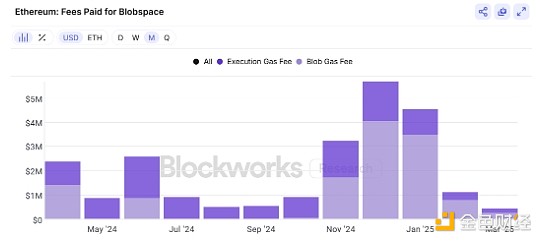
Source: Blockworks; Compiled by: Wuzhu, Golden Finance
If you ask ordinary people in the crypto industry, what problems this industry is currently facing, "too many blockchains and not enough applications" will soon become a common complaint.
This complaint has striking similarities with the early Internet era.
In the late 1990s and early 21st century Internet bubbles, skeptics also criticized overinvestment in overinfrastructure, especially fiber optics.
Telecom (Global Crossing, WorldCom, AT&T) spend billions of dollars laying submarine cables and long-distance fiber networks because they believe that Internet traffic will increase exponentially.
Even Internet pioneer Bob Metcalf criticized this overinvestment, believing that there was no sufficient demand at all.
In hindsight, we now know Metcalf was wrong (Metcalf actually took back his comments after admitting his mistake in 2006).
The explosive bandwidth surplus makes amazing products like YouTube, cloud computing, and Netflix possible.
For example, Netflix has been a mail-based DVD rental company for years and did not begin slowly transitioning to streaming until 2007—thanks to the previously laid bandwidth infrastructure foundation.
In short, the bet “if we build it, demand will come” was eventually confirmed on the internet, despite the fact that it took a decade and also experienced the bankruptcy of Internet infrastructure companies such as Global Crossing.
Ethereum is betting on similar bets today (somewhat) today.
Ethereum L1 actually gave up the execution expenses of L2 based on its summary-centered roadmap.
But Ethereum plans to eventually expand its supply of DA through an upcoming upgrade, thereby earning profits from data availability (DA) fees. The idea is that Ethereum DA will eventually become so rich that it will eventually trigger user demand.
Like early internet builders, Ethereum researcher Justin Drake believes “if we build it, demand will come.”
Drake’s moon landing plan is as follows: With a 10 million TPS, Ethereum pays $0.001 in DA fees per transaction, and Ethereum earns about $1 billion a day.
(This assumes that L2 uses Ethereum L1 for DA rather than using alternative DA layers like Celestia or EigenLayer. But Drake believes the benefits of synchronous composability will make it a reality.)
This is a bold argument considering today’s DA consumption; Ethereum’s blob gas fee was only $272,000 in March.
Maybe Ethereum bulls think that the development of Web3 will be similar to the history of Web2, but Ethereum does not exist in silos, it faces fierce competition from other chains.
We still have very little speculation about which on-chain applications will dominate blockchain usage. Does the world need so much data availability?
But I digress. The saying “too many chains” may eventually come true. But it is too early to draw conclusions, just like the early days of the Internet.
If true, the market is curbing further wasteful spending. For example: L1 premium has been compressing rapidly.
L1's days of financing between $300 million and $500 million are over. In 2024, the amount of L1/L2 blockchain financing ranges from as low as US$14 million (Initia) to as high as US$100 million (Berachain) and US$225 million (Monad).
The high cost and lack of value acquisition of running L1 sends a feedback signal to the market to stop funding these projects.
In contrast, according to Blockworks’ Jason Yanowitz estimates, the L2 is much cheaper to start up, about $5 million to $15 million.
This may explain Celo L1’s recent shift to L2, or what Ethereum, special project leader at EigenLayer, said that Ethereum “inevitably tends to be efficient.”













